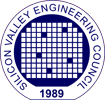Please join us on October 13, 2022, for a virtual fireside chat with Dr. Jacopo Buongiorno, Professor of Nuclear Science and Engineering at MIT Cost: $5.00 plus Eventbrite fee (with IEEE2022 promotion code). RSVP: (https://www.mitcnc.org/events/the-future-of-nuclear-energy-have-we-entered-a-new-era/) Hint: Enter the code in the “promotion code” entry and be sure to click “apply” before paying. Event Details: https://r6.ieee.org/scv-pesias/2022/10/02/the-future-of-nuclear-energy-have-we-entered-a-new-era/ Co-sponsored by: MIT Club of Northern California Speaker(s): Prof. Jacopo Buongiorno, Agenda: With the Russian cutoff of natural gas to Europe and the trends toward de-globalization and supply chain security, the issue of energy security has risen to the top of national agendas throughout the world. California’s legislature and governor have approved a 5 year extension of the state’s last nuclear plant, Diablo Canyon, which generates 8% of the state’s energy. Japan’s prime minister has called for re-starting its nuclear plants and for a broader policy shift toward nuclear. Germany is postponing the closure of two of its remaining nuclear plants, suggesting perhaps a second Energiewende (completing a U-turn?). France is considering up to 14 new reactors. China has 21 nuclear plants under construction. In the US, the Inflation Reduction Act provides subsidies for existing and advanced nuclear reactors. Many other countries are planning new reactors, too. These moves indicate a growing consensus that the world economy needs every megawatt of nuclear energy available. Nearly every model of global energy demand points to the important role nuclear power must play to reduce carbon emissions. By how much can nuclear power reduce the world’s carbon emissions? Or, can renewables do it all? “It is not a choice between the two. (https://twitter.com/hashtag/solar?src=hash&ref_src=twsrc%5Etfw) will grow as fast as it physically can and won’t be 100%. Same with (https://twitter.com/hashtag/wind?src=hash&ref_src=twsrc%5Etfw), (https://twitter.com/hashtag/geothermal?src=hash&ref_src=twsrc%5Etfw), (https://twitter.com/hashtag/hydro?src=hash&ref_src=twsrc%5Etfw), (https://twitter.com/hashtag/BiomassCCS?src=hash&ref_src=twsrc%5Etfw), (https://twitter.com/hashtag/efficiency?src=hash&ref_src=twsrc%5Etfw), etc. You still have a huge political/resiliency hole that (https://twitter.com/hashtag/nuclear?src=hash&ref_src=twsrc%5Etfw) has to fill. Every model shows it. (https://twitter.com/hashtag/cleanfirm?src=hash&ref_src=twsrc%5Etfw)” — Jigar Shah (@JigarShahDC) August 27, 2022 The International Energy Agency projects that a doubling of the world’s nuclear output is required by 2050 to reach net zero energy. The nuclear industry has a history of missing schedule and budget. Advocates of small modular reactors say they will be easier to build than larger ones. In the US, TerraPower and X-Energy have been chosen by the DOE to build small reactors based on new technology. China and Russia are building smaller reactors. More than $1.2 B of venture funding has gone into new fission technology in the past year. Is smaller, cheaper, faster the answer? Virtual: https://events.vtools.ieee.org/m/326386
The Future of Nuclear Energy: Have we entered a new era?

- This event has passed.
